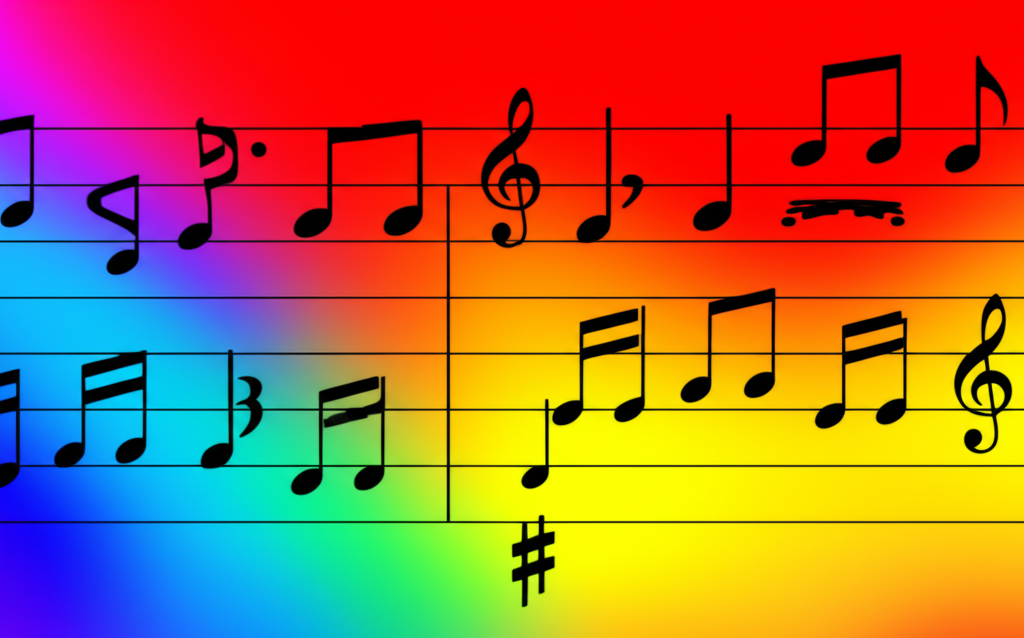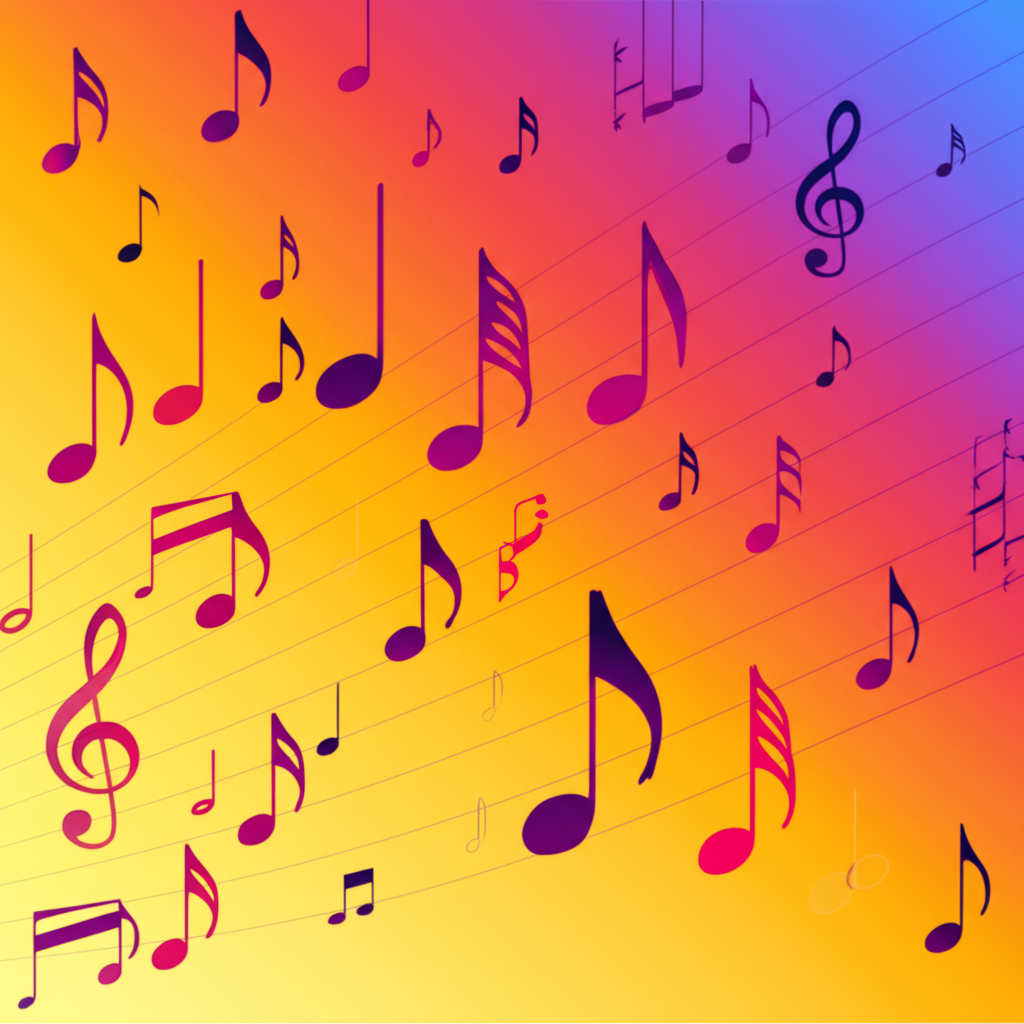
Rhythm Basics: The Pulse and Flow of Music

b4n1
May 17, 2025, 4:26 p.m.
Rhythm Basics: The Pulse and Flow of Music
Summary:
Rhythm is the fundamental organizing principle of time in music—the pattern of sounds and silences that gives music its energy, flow, and character. This comprehensive guide explores the essential elements of rhythm, including pulse, meter, note values, syncopation, and polyrhythms. Understanding rhythm is crucial for musicians of all levels and genres, as it forms the temporal framework upon which melody and harmony are built. Whether you're playing an instrument, composing, or simply deepening your appreciation of music, mastering these rhythmic fundamentals opens new dimensions of musical expression and enjoyment.
Keywords:
rhythm, pulse, beat, meter, time signature, note values, syncopation, polyrhythm, subdivision, tempo, accent, musical time, rhythmic notation
Introduction:
When we listen to music, our bodies instinctively respond to its rhythm—we tap our feet, nod our heads, or dance. This natural response reveals something fundamental about rhythm: it connects directly to our physical experience of time, creating patterns that engage our minds and bodies.
Rhythm is perhaps the most primal element of music. Before harmony developed, before complex melodies emerged, humans organized sound into rhythmic patterns. From the earliest drum circles to the most sophisticated symphonies, rhythm provides the temporal structure that makes music coherent and engaging.
Yet despite its fundamental nature, rhythm can be surprisingly complex. It encompasses everything from the steady pulse underlying a piece to intricate patterns of accents, from the simple division of time into measures to complex polyrhythms that challenge our perception of musical time.
In this article, we'll explore the building blocks of rhythm, examining how musicians create, notate, and manipulate time to express emotion, create interest, and organize musical ideas. Whether you're a beginner seeking to understand basic rhythmic concepts or an experienced musician looking to deepen your rhythmic vocabulary, these principles provide the foundation for rhythmic fluency and expression.
The Elements of Rhythm
Pulse: The Heartbeat of Music
At its most basic level, rhythm begins with pulse—the steady, underlying beat that serves as music's heartbeat. The pulse provides a consistent reference point, allowing musicians to coordinate their playing and listeners to anticipate the flow of the music.
A regular pulse is typically organized into patterns of strong and weak beats, creating a sense of rhythmic hierarchy. These patterns form the basis of meter, which we'll explore next.
Not all music has an obvious pulse—some contemporary classical music and free jazz deliberately avoid regular pulse to create specific effects. However, most music across cultures and throughout history has been organized around some form of regular pulse.
Tempo: The Speed of the Pulse
Tempo refers to the speed at which the pulse occurs, typically measured in beats per minute (BPM). Tempo greatly affects the character of music:
- Very slow tempos (40-60 BPM) create a sense of gravity, meditation, or solemnity.
- Moderate tempos (60-120 BPM) often feel natural and conversational, approximating the pace of the human heartbeat or walking.
- Fast tempos (120-200+ BPM) generate excitement, urgency, or playfulness.
Composers often use Italian terms to indicate tempo, such as:
- Largo - very slow and broad (40-60 BPM)
- Adagio - slow and stately (66-76 BPM)
- Andante - at a walking pace (76-108 BPM)
- Moderato - moderate speed (108-120 BPM)
- Allegro - fast and bright (120-168 BPM)
- Presto - very fast (168-200+ BPM)
Modern music often uses precise BPM markings rather than these traditional terms, especially in electronic and produced music where exact tempo control is possible.
Meter: Organizing the Pulse
Meter refers to the organization of beats into regular groupings, marked by patterns of stressed and unstressed pulses. These groupings, called measures or bars, provide a framework for rhythmic organization.
The two main categories of meter are:
- Simple meters - Each beat divides naturally into two equal parts (duple subdivision)
- Compound meters - Each beat divides naturally into three equal parts (triple subdivision)
Within these categories, meters are further classified by the number of beats per measure:
- Duple meter - Two beats per measure (e.g., 2/4, 2/2)
- Triple meter - Three beats per measure (e.g., 3/4, 3/8)
- Quadruple meter - Four beats per measure (e.g., 4/4, 4/8)
Compound meters include 6/8 (two groups of three eighth notes), 9/8 (three groups of three), and 12/8 (four groups of three).
Time Signatures: Notating Meter
In Western notation, meter is indicated by a time signature at the beginning of a piece (and whenever the meter changes). The time signature consists of two numbers, one above the other:
- The top number indicates how many beats are in each measure.
- The bottom number indicates which note value receives one beat.
For example:
- 4/4 - Four quarter-note beats per measure (the most common time signature, also notated as C for "common time")
- 3/4 - Three quarter-note beats per measure (used for waltzes and many other dance forms)
- 2/2 - Two half-note beats per measure (also called "cut time," notated as ₵, often used for marches and faster pieces)
- 6/8 - Six eighth-note beats per measure, typically grouped as two dotted quarter notes (used for jigs, compound duple meter)
Some music uses more complex or asymmetrical meters, such as:
- 5/4 - Five quarter-note beats per measure (as in Dave Brubeck's "Take Five")
- 7/8 - Seven eighth-note beats per measure (common in Balkan folk music, often grouped as 3+2+2 or 2+2+3)
- Mixed meters - Changing time signatures throughout a piece (found in progressive rock, contemporary classical music, and some folk traditions)
Rhythmic Values and Notation
Note Values: Dividing Musical Time
Western musical notation uses specific symbols to indicate the duration of notes and rests (silences). Each symbol represents a precise fraction of musical time:
- Whole note (semibreve) - Typically lasts for four beats in 4/4 time
- Half note (minim) - Half the duration of a whole note (two beats in 4/4)
- Quarter note (crotchet) - One-quarter the duration of a whole note (one beat in 4/4)
- Eighth note (quaver) - One-eighth the duration of a whole note (half a beat in 4/4)
- Sixteenth note (semiquaver) - One-sixteenth the duration of a whole note (quarter of a beat in 4/4)
Each note value is exactly half the duration of the previous one in this list, creating a binary relationship between durations. Additional shorter values include 32nd notes and 64th notes, though these are less common.
Dotted Notes and Ties
To create durations that don't fit neatly into the binary division of note values, musicians use dots and ties:
- Dotted notes - A dot after a note increases its duration by half of its original value. For example, a dotted quarter note equals a quarter note plus an eighth note (1.5 beats in 4/4).
- Double-dotted notes - A second dot adds half the value of the first dot. A double-dotted quarter note equals a quarter note plus an eighth note plus a sixteenth note (1.75 beats in 4/4).
- Ties - A curved line connecting two notes of the same pitch, indicating that they should be played as a single note with their combined duration.
Rests: Notating Silence
Silence is as important to rhythm as sound. Rests indicate periods of silence, and like notes, they come in specific durations:
- Whole rest - Equal in duration to a whole note
- Half rest - Equal in duration to a half note
- Quarter rest - Equal in duration to a quarter note
- Eighth rest - Equal in duration to an eighth note
- Sixteenth rest - Equal in duration to a sixteenth note
The effective use of rests creates space within music, allowing for phrasing, breathing, and dramatic effect.
Examples:
Example in ABC Notation:
Basic rhythm patterns in 4/4 time:
Simple rhythm in 3/4 time (waltz):
Compound meter rhythm in 6/8:
Rhythmic Concepts and Techniques
Downbeats and Upbeats
Within the structure of meter, certain beats hold more prominence than others:
- Downbeat - The first and typically strongest beat of a measure
- Upbeat - The last beat of a measure, leading into the downbeat of the next measure, often creating a sense of forward motion
- Backbeat - In popular music (especially rock, funk, and hip-hop), emphasis on beats 2 and 4 in 4/4 time, creating a distinctive groove
The natural emphasis pattern in 4/4 is: STRONG - weak - medium - weak. In 3/4, it's typically: STRONG - weak - weak.
Syncopation: Playing Against the Beat
Syncopation occurs when rhythmic accents fall on unexpected beats or off-beats, contradicting the established meter. It creates rhythmic interest and tension by disrupting predictable patterns.
Common techniques of syncopation include:
- Accenting normally weak beats (such as beats 2 and 4 in 4/4 time)
- Placing notes between beats ("off the beat")
- Sustaining notes across barlines or strong beats
- Creating unexpected patterns of long and short notes
Syncopation is a defining characteristic of many musical styles, including jazz, ragtime, Latin music, funk, and reggae. It adds excitement, unpredictability, and forward momentum to music.
Swing Feel: Beyond Straight Rhythm
In jazz and related styles, rhythmic notation often doesn't capture the actual performance practice. "Swing" refers to a rhythmic feel where consecutive eighth notes are not played with equal duration.
In swing feel:
- The first eighth note of each pair is lengthened
- The second eighth note is shortened
- The exact ratio varies by tempo and style, from subtle (approximately 60:40) to more pronounced (approximately 67:33, or triplet feel)
While traditionally notated as regular eighth notes with a "swing" indication, this subtle rhythmic modification is crucial to the character of jazz, early rock and roll, blues, and many other styles.
Polyrhythm: Multiple Rhythmic Layers
Polyrhythm occurs when two or more contrasting rhythmic patterns are played simultaneously. The most common polyrhythms involve the simultaneous division of the same time span into different equal subdivisions.
Common polyrhythms include:
- 2:3 (two against three) - For example, two half notes played against three quarter-note triplets
- 3:4 (three against four) - For example, three quarter notes played against four dotted eighth notes
- 4:3 (four against three) - For example, four quarter notes played against three quarter-note triplets
Polyrhythm is fundamental to many African musical traditions and has profoundly influenced jazz, contemporary classical music, progressive rock, and electronic music. It creates rhythmic complexity and tension while maintaining an underlying pulse.
Rhythmic Development in Different Musical Traditions
Western Classical Rhythm
Western classical music has evolved from relatively straightforward rhythmic structures in Medieval and Renaissance music to increasing complexity:
- Baroque music (1600-1750) maintained steady rhythmic patterns (often called "motor rhythm") but used complex overlapping patterns.
- Classical period (1750-1820) emphasized symmetrical phrases and clear meter.
- Romantic music (1820-1900) introduced more flexibility with rubato (expressive timing) and complex rhythmic textures.
- 20th-century classical music radically expanded rhythmic possibilities, introducing irregular meters, polyrhythms, and abandonment of traditional meter altogether in some works.
Jazz Rhythm
Jazz revolutionized rhythm in Western music through several innovations:
- Swing feel - The characteristic long-short interpretation of eighth notes
- Improvisational freedom - Allowing performers to create spontaneous rhythmic variations
- Syncopation - Extensive use of unexpected accents and off-beat emphasis
- Rhythmic displacement - Shifting phrases earlier or later than expected
- Polyrhythm - Particularly in more experimental jazz forms
African and Afro-Cuban Rhythms
African rhythmic traditions, which profoundly influenced American and Latin American music, are characterized by:
- Polyrhythm - Multiple concurrent rhythmic patterns
- Cross-rhythm - The conflict of different meters (such as 6/8 and 3/4 simultaneously)
- Timeline patterns - Repeating rhythmic phrases that provide structure (like the clave in Afro-Cuban music)
- Call and response - Rhythmic dialogue between performers
- Additive rhythm - Patterns built from combinations of unequal beat groupings (like 3+3+2)
The clave rhythm, a key element in Afro-Cuban music, has become essential to salsa, rumba, son, and many other Latin styles, and has significantly influenced popular music worldwide.
Indian Rhythmic Systems
Indian classical music features one of the world's most sophisticated approaches to rhythm:
- Tala - Cyclical rhythmic patterns with specific numbers of beats
- Layakari - The art of rhythmic variation and superimposition
- Tihai - A rhythmic pattern repeated three times, ending precisely on the first beat of the cycle
- Konokol - Vocalized rhythm syllables used for learning and performance
These systems allow for immense rhythmic complexity while maintaining strict adherence to the underlying cycle, influencing fusion genres and contemporary percussion.
Developing Rhythmic Skills
Counting Systems
Musicians use various counting systems to internalize and communicate rhythm:
- Traditional counting - "1 e and a 2 e and a 3 e and a 4 e and a" for sixteenth notes in 4/4
- Takadimi - A system using specific syllables for different subdivisions ("ta-ka-di-mi" for sixteenth notes)
- Kodály method - Uses syllables like "ta" for quarter notes and "ti-ti" for eighth notes
These systems help musicians accurately interpret rhythmic notation and maintain steady time when performing.
Practicing with a Metronome
The metronome—a device that produces a steady pulse—is an essential tool for developing rhythmic accuracy and stability. Effective metronome practice includes:
- Starting at slow tempos and gradually increasing speed
- Practicing with the metronome clicking on different beats (e.g., only on beats 2 and 4)
- Setting the metronome to increasingly sparse clicks (e.g., only on beat 1 of each measure)
- Working with subdivisions to develop precision
Regular metronome practice builds an internal sense of time that allows for both precision and expressive flexibility.
Body Movement and Rhythm
Physical movement is a powerful way to internalize rhythm:
- Conducting patterns - Using standardized hand movements to embody meter
- Tapping - Using different limbs to represent different parts of the rhythm
- Dalcroze Eurhythmics - A method teaching musical concepts through movement
- Dance - Perhaps the most complete physical expression of rhythm
These approaches engage the body's natural rhythmic capabilities, improving coordination and deepening rhythmic understanding.
Conclusion:
Rhythm is the organizing principle that gives music its temporal structure, energy, and flow. From the most basic pulse to the most complex polyrhythm, rhythmic elements work together to create music's movement through time. Understanding these elements enriches both the creation and appreciation of music.
While we've explored rhythm primarily through Western notation and concepts, it's important to remember that every musical culture has developed its own approach to organizing time. The diversity of rhythmic systems around the world—from Indian talas to West African timelines, from Japanese gagaku to Balkan asymmetrical meters—represents humanity's endless creativity in structuring the experience of musical time.
Whether you're a performer seeking to develop better rhythmic precision, a composer looking to create more interesting temporal structures, or a listener wanting to understand what makes music move, rhythm provides the foundation upon which all other musical elements rest. By developing rhythmic awareness and skill, musicians open pathways to more expressive, engaging, and sophisticated musical communication.
References:
-
Lerdahl, Fred, and Ray Jackendoff. "A Generative Theory of Tonal Music." MIT Press, 1996.
-
London, Justin. "Hearing in Time: Psychological Aspects of Musical Meter." Oxford University Press, 2012.
-
Friedland, Ed. "Building Walking Bass Lines." Hal Leonard, 1993.
-
Agawu, Kofi. "African Rhythm: A Northern Ewe Perspective." Cambridge University Press, 1995.
